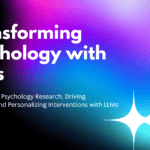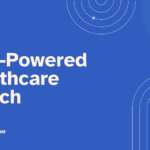In the ever-evolving battle against diseases, a new hero has emerged: Generative Artificial Intelligence (Generative AI). This groundbreaking technology is making significant strides in the early detection of illnesses, potentially saving lives and improving patient outcomes. Let’s delve into how generative AI contributes to early disease detection, exploring its multifaceted capabilities in a simplified manner.
Understanding Pattern Recognition and Anomaly Detection
Generative AI is like a super-smart detective that learns from vast amounts of medical data to spot even the subtlest clues indicating the presence of diseases. It can analyze medical images, such as X-rays or MRIs, and patient data, like blood tests and genetic information. By learning from this data, it becomes adept at recognizing patterns associated with different diseases.
For instance, let’s consider the case of diabetic retinopathy. This condition, which can lead to blindness if left untreated, often shows early signs in the retina. Generative AI can analyze retinal images and detect tiny changes in blood vessel patterns that may indicate the onset of diabetic retinopathy. By catching these changes early, doctors can intervene before the condition progresses, potentially saving a patient’s sight.
Harnessing Data Augmentation and Synthetic Sample Generation
One of the challenges in teaching AI to detect diseases early is the limited availability of labeled data. Generative AI comes to the rescue by creating synthetic medical data that looks and acts like real-world patient data. This synthetic data helps AI models learn better, even when there’s not enough real data to go around.
Imagine a scenario where doctors want to train an AI to recognize a rare disease with only a handful of patient records available. Generative AI can generate synthetic data that mimics the patterns and characteristics of the disease, allowing the AI to learn more effectively and detect the disease earlier in real patients.
Advancing Drug Discovery and Personalized Medicine
Generative AI isn’t just about spotting diseases early; it’s also helping researchers find new ways to treat them. By simulating how different drugs interact with the body’s biological targets, generative AI speeds up the drug discovery process. This means scientists can find potential treatments faster and get them to patients sooner.
Take Alzheimer’s disease, for example. Researchers are using generative AI to simulate how potential drugs interact with proteins involved in the disease. By pinpointing the most promising drug candidates, researchers can accelerate the development of treatments that may slow or even reverse cognitive decline in Alzheimer’s patients.
Empowering Risk Assessment and Early Intervention
Generative AI is not just about waiting for diseases to show up—it’s also about predicting and preventing them altogether. By analyzing a person’s medical history and genetic makeup, generative AI can create personalized risk profiles for various diseases. This allows doctors to intervene early, sometimes even before symptoms appear, to prevent diseases from developing or worsening.
Consider the case of heart disease. Generative AI can analyze factors like genetics, blood pressure, and cholesterol levels to assess a person’s risk of developing heart disease. Armed with this information, doctors can recommend lifestyle changes, medications, or other interventions to lower the risk of heart attacks and other cardiovascular events.
Unveiling New Biomarkers for Early Detection
Biomarkers are like clues that indicate the presence of a disease. Generative AI is helping researchers uncover new biomarkers by analyzing vast amounts of patient data. By identifying patterns that correlate with specific diseases, generative AI can lead to the development of new diagnostic tools for earlier and more accurate disease detection.
Let’s say researchers are looking for new ways to detect cancer early. Generative AI can analyze genetic data from cancer patients and healthy individuals to uncover unique patterns associated with the disease. These patterns could serve as biomarkers for cancer, leading to the development of blood tests or imaging techniques that can detect the disease at its earliest stages.
Examples
Lets look at some of the examples based on the practical applications of generative AI in early disease detection.
- Skin Lesions: Generative AI algorithms analyze images of skin lesions to detect early signs of skin cancer. For instance, a mole with irregular borders or uneven coloring could indicate melanoma. By flagging such anomalies, the AI aids dermatologists in early diagnosis, facilitating timely intervention and treatment to prevent the spread of cancer.
- Lung Nodules: AI-powered systems in radiology analyze CT scans to identify lung nodules, which may be indicative of lung cancer at an early stage. For instance, a small, well-defined nodule detected on a CT scan could prompt further investigations for malignancy. Generative AI enhances the accuracy of these detections, enabling prompt treatment initiation and potentially improving survival rates for lung cancer patients.
- Heart Murmurs: Generative AI assists in the early detection of heart conditions such as murmurs or abnormalities in cardiac function by analyzing heart sounds. For instance, irregular rhythms or abnormal sounds during auscultation could signify underlying cardiac issues. By accurately detecting these subtle anomalies, the AI aids cardiologists in timely diagnosis and intervention, preventing further cardiac complications.
- Voice Changes: AI algorithms analyze changes in voice patterns to detect neurological conditions or vocal cord abnormalities indicative of underlying diseases. For instance, a tremor or slurred speech could be early indicators of conditions like Parkinson’s disease or vocal cord paralysis. Generative AI algorithms enhance the sensitivity of these analyses, enabling early diagnosis and intervention to manage these conditions effectively.
Final Words
Generative AI is a game-changer in the field of early disease detection, with its ability to recognize patterns, generate synthetic data, facilitate drug discovery, predict risks, and uncover new biomarkers. By harnessing the power of AI in this way, we’re taking significant strides towards a future where diseases are detected earlier, treatments are more effective, and lives are saved. It’s an exciting journey that holds immense promise for the future of healthcare.



